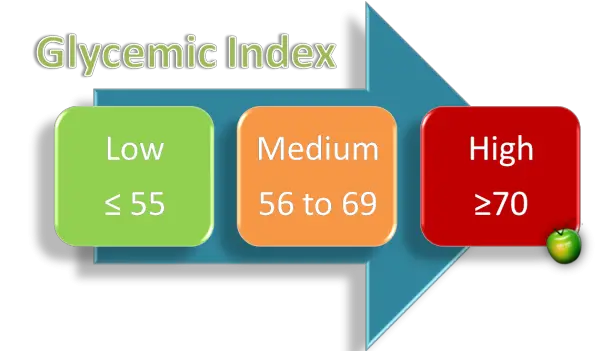The glycemic index measures the effect of the different kinds of food on the blood sugar level. The application of GI in modern diets is very important and complex thing. Because of the fact that there is much different information surrounding the internet, you need to know the right one about the glycemic index.
The glycemic index takes into account only the type and not the quantity of carbohydrate in a usual portion. Some food has a larger concentration of carbohydrate than the rest. For example, one portion of carrots has only 6 grams of carbohydrate, unlike the chocolate which has as much as 52 grams.
Meaning that even the glycemic index of carrot (47) is higher than the chocolate’s (38), still the chocolate has a much larger effect on the blood sugar level. This fact is derived from the one as to equate the quantity of carbohydrate between normal portions of carrots and chocolate, 81 portions of carrots are required against one of chocolate.
The glycemic index of a certain food can vary, depending on the place where such food is breed and the way it’s prepared. For example, American potatoes have a lower glycemic index than the Australian ones. In fact the more the food is more processed the glycemic index is higher.
Glycemic Index And Weight Loss
Glycemic index diets are simply weight-loss diets based on blood sugar level. In this case, GI is used for planning your diet. GI was originally developed to improve control of blood sugar levels. It classifies foods according to their potential to raise the blood sugar levels. It means that GI diet is not a true low-carb diet because you don’t count carbohydrates. Also GI diet does not require you to reduce your portion sizes or counting calories.
You can read about GI diet in details here.
Glycemic Index Facts
Whole grains have a lower glycemic index than refined grains.
- Glycemic index of Bran flakes and Cheerios is 74
- Shredded wheat have GI of 75
- GI of Fruit Loops is 69
- Long-grain white rice is in the range between 41 and 64
- Brown rice from 50 to 66
- GI of white bread is 70
- Whole grain bread have GI of 71
The fact that the sugar has lower glycemic index than the starch is ironical, because the starch is made completely out of glucose molecules. It is similar with Coca-Cola in regard to Grape-nuts flakes.
However, experts don’t agree with the value of glycemic index. The US Diabetes Association says that there isn’t a proven relation between glycemic index, glycemic load and the emergence of a type 2 diabetes.
Canadian and Australian experts have supported glycemic index as a tool for control and improving of the blood sugar level.
Others put primarily the quantity of carbohydrate and the distance between meals, and then GI as an additional tool for blood sugar level check.
Calculate The Glycemic Index Here
There isn’t doubt that different food has different effect on the blood sugar level, but total carbohydrates have lot larger effect than glycemic index.
If you find it hard to pay attention to GI in modern diets, focus on:
- Beans and legumes
- Whole grains
- Fresh fruit
- Vegetables
- Eat lean meat
- Avoid highly refined food


